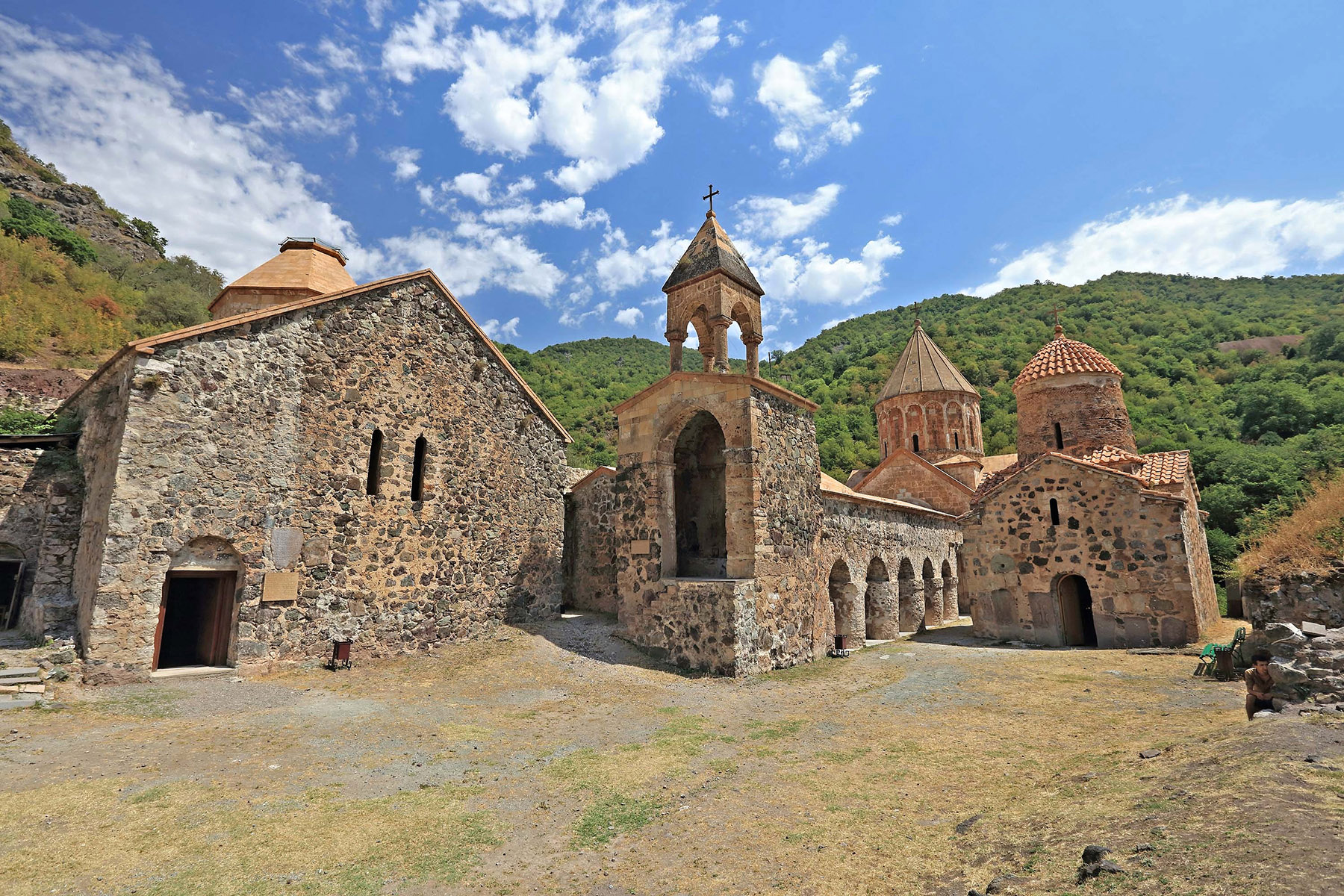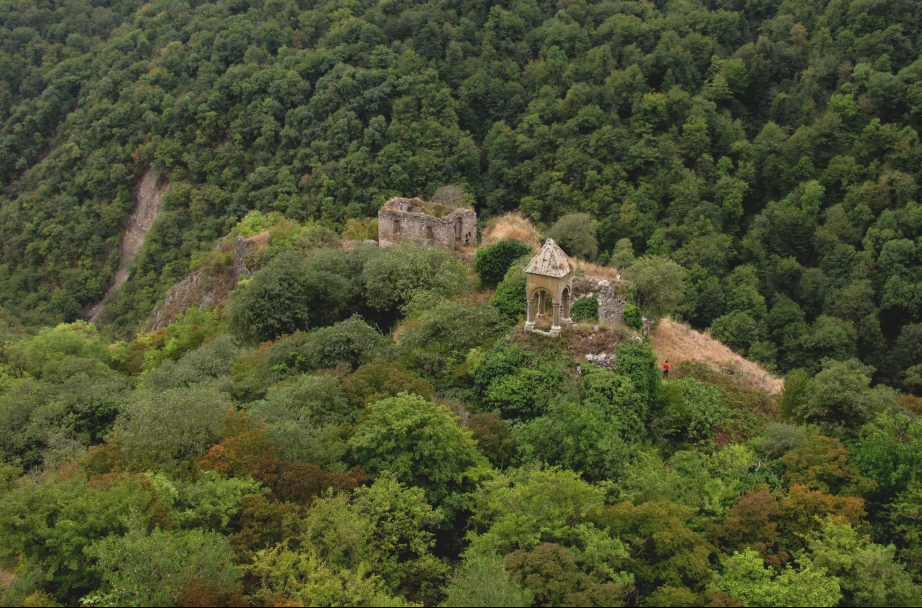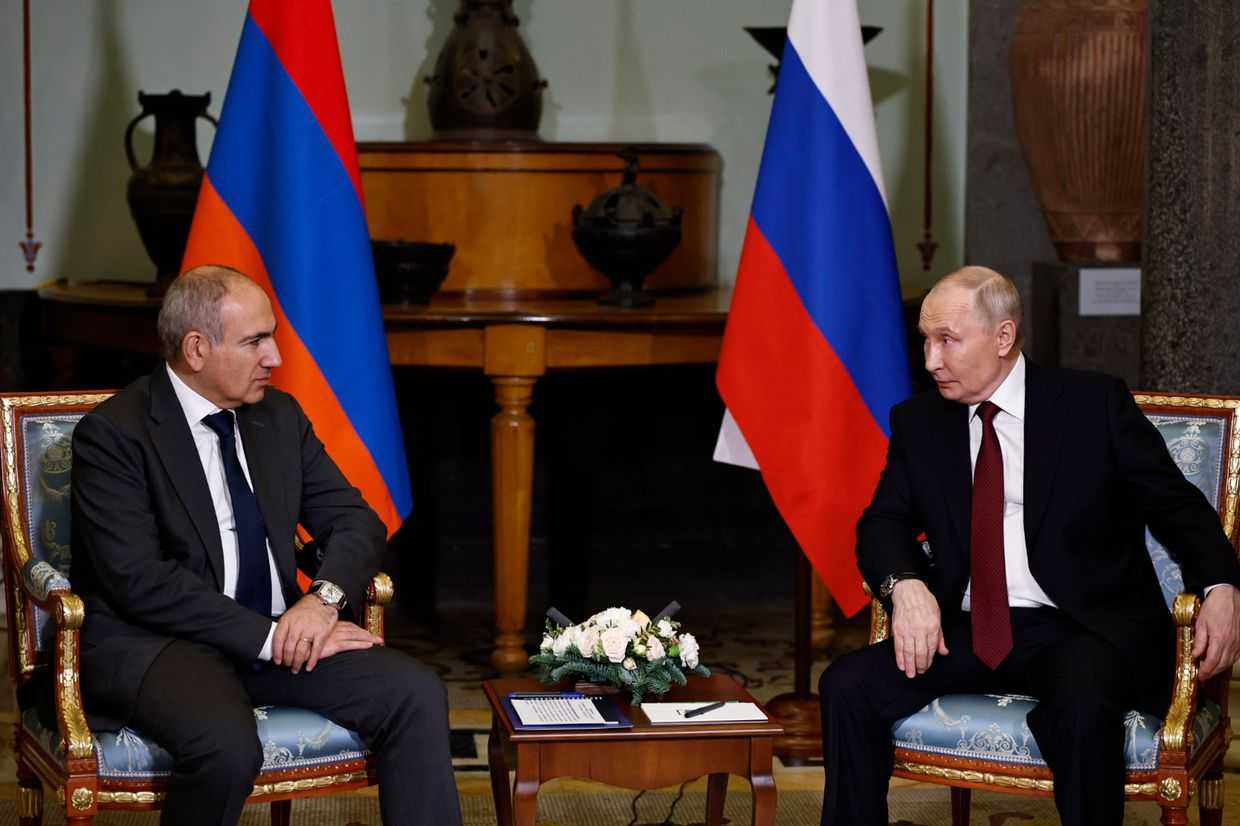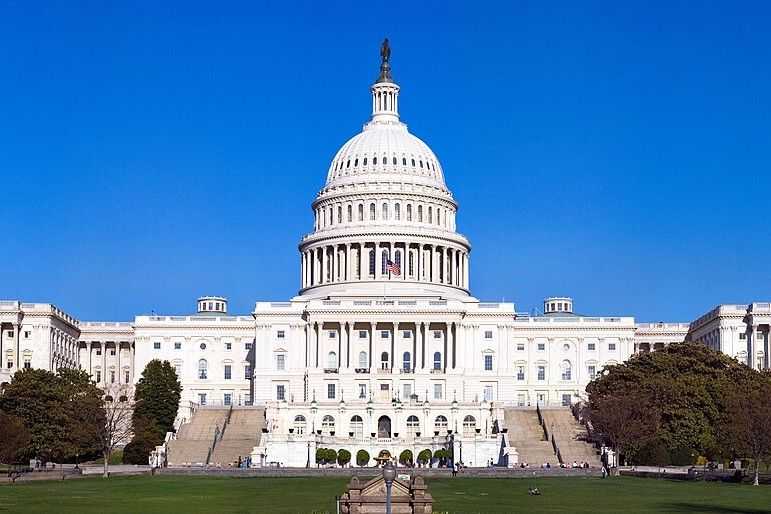
Azerbaijan’s Minister of Culture, citing a fringe historical theory, threatened to destroy Armenian inscriptions on religious monuments throughout territories Azerbaijan retook in the Second Nagorno-Karabakh War. The comments have sparked panic about the future of the monuments and highlighted the contested histories between Armenia and Azerbaijan.
‘A working group consisting of specialists who know Albanian history and architecture has been set up to remove the so-called traces written by Armenians on Albanian religious temples’, Anar Karimov, Azerbaijan’s Minister of Culture told journalists on 3 February.
The ‘Albanian religious temples’ he was referring to are Christian churches, monasteries, and other monuments located in territories that returned to Azerbaijani control during and after the Second Nagorno-Karabakh War.
These monuments, which are almost unanimously recognised to be of Armenian origin by scholars outside of Azerbaijan, are, according to Azerbaijani authorities actually of Caucasian Albanian construction — referring to a Christian kingdom that existed in the South Caucasus in the first millennium CE — with any Armenian elements on the monuments being purposeful falsifications only made after the 19th century.
Karimov’s announcement was met with outrage in Armenia, and concern from abroad. The US Commission for International Religious Freedom, for instance, urged Azerbaijani authorities to ‘preserve and protect places of worship and other religious and cultural sites’.
On 8 February, the Azerbaijani government released a follow-up statement in which, after criticising reportage from ‘biased foreign mass media outlets’, they stated that any ‘falsifications’ would be ‘documented’ and ‘presented’ by the aforementioned working group with the possible removal of the ‘falsifications’ not mentioned.
The fate of Armenian heritage in the territories that came under Azerbaijani control in 2020, has been under scrutiny since the end of the war, as Azerbaijani officials have repeatedly declared that medieval Armenian sites such as the Dadivank monastery (referred to by Azerbaijani officials as ‘Khudavang’) were, in actuality, Caucasian Albanian.
In December 2021, as part of its ruling on duelling cases submitted by Armenia and Azerbaijan, the International Court of Justice ordered Baku to protect places of Armenian cultural heritage within its borders from ‘vandalism and desecration’.

Whose Churches?
The claim that all Christian churches and monuments before the 19th century in Nagorno-Karabakh and surrounding regions are of Caucasian Albanian construction, originates from theories propagated by nationalist Azerbaijani historians from the 1950s onwards, of whom the most seminal was the late Ziya Bunyadov.
According to the work of Victor Schnirelmann, a historian and senior researcher at the Russian Academy of Sciences, the rise of such empirically unsupported nationalist history-writing began in the 1930s. According to Schnirelmann, many of the titular nationalities of Soviet republics — the nationalities after whom a republic was named, e.g. Kazakhs in Kazakhstan — sought to prove ‘indigeneity’ on the land of a given republic, and to use such a status in resolving disputes over territory according to the Soviet policy of ‘korenizatisya’ (‘nativisation’). As Soviet republics were multi-ethnic, this policy often meant that the historical heritage of non-titular nationalities was suppressed, erased. or otherwise masked.
In this vein, nationalist Azerbaijani historians in the Soviet period claimed that Caucasian Albanians were the direct ancestors of solely the Azerbaijani people, and had no connection whatsoever to Armenians, with the Armenian-speaking population of Nagorno-Karabakh simply being Armenised Caucasian Albanians or recent newcomers to the region.

Such neat distinctions are far from reality, Igor Dorfmann-Lazarev, a researcher of Armenian history at the School of Oriental and African Studies in London told OC Media. After the annexation of several provinces of the kingdom of Armenia to Albania during the Persian rule of both kingdoms, there was a mixture of populations, and a significant Armenian cultural and architectural influence on the Kingdom of Albania.
Additionally, after the Islamic conquest of Persia in the 7th century, there was a further linguistic and cultural Armenisation of remaining Christians in the region.
‘When we speak about the Armenian culture we don’t speak about the purity of blood’, Dorfmann-Lazarev said, ‘but a culture that became the local culture of the Christians of the South Caucasus’.
History wars after communism
The conflict over monuments and the territorial claims they supposedly support only increased following the collapse of the USSR. Along with the destruction of cemeteries and various cultural monuments associated with ‘the enemy’ in both Armenia and Azerbaijan, there were also state-led projects of cultural erasure.
The most notable case took place in 2005 when the Armenian cemetery in Julfa, located in Azerbaijan’s exclave of Nakhchivan, which contained thousands of medieval khachkars (distinctive Armenian cross-stones) that were demolished by the Azerbaijani government.
The acts of historical erasure and obfuscation were not unique to the Azerbaijani authorities. Many cultural monuments in the territories in and around Nagorno-Karabakh were ruined through neglect and vandalism while under Armenian control.
In addition, when the late 19th-century Govhar Agha Upper Mosque in the Nagorno-Karabakh city of Shusha (Shushi) was restored by Armenian authorities in 2019, it was reopened as a ‘Persian mosque’ — to much chagrin in Azerbaijan.
Some believe that the statements being made today by Azerbaijani officials presage a new level of destruction to rival that of the Julfa khachkars in 2005, and that talk of a ‘working group’ is only there to circumvent the 2021 judgement by the ICJ.
Lori Khatchadourian, an associate professor at the Department of Near Eastern Studies at Cornell University who has worked on documenting the destruction of cultural heritage in Nagorno-Karabakh after the war, told OC Media that she fears that ‘specialists of the working group’ formed by the Azerbaijani government ‘can frame the Armenian inscriptions (on cultural monuments) as forgeries and thus discredit the notion that their erasure violates the ICJ judgment’.
For ease of reading, we choose not to use qualifiers such as ‘de facto’, ‘unrecognised’, or ‘partially recognised’ when discussing institutions or political positions within Abkhazia, Nagorno-Karabakh, and South Ossetia. This does not imply a position on their status.








